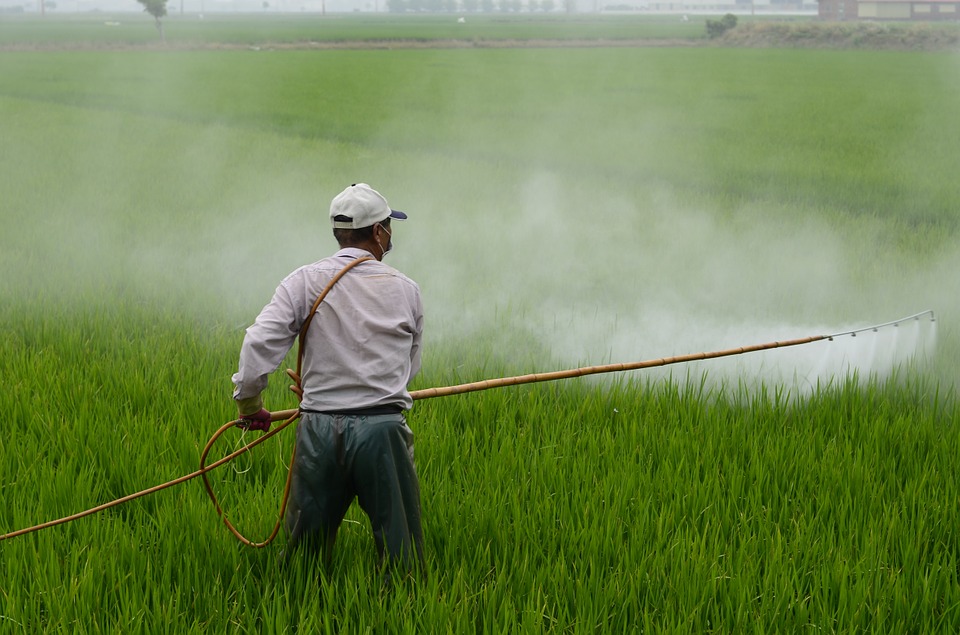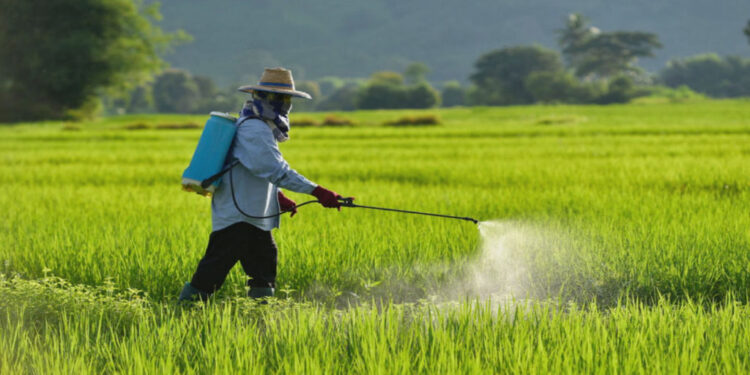Pesticide is a general name for plant regulating compounds such as insecticides, nematicides, molluscicides, rodenticides, fungicides, and herbicides, with each compound having its specific function in agriculture.
Due to the nature of these compounds and their side effect on plants and animals, many have been restricted from public use. For example, in the last century, a particular compound, organochlorine, used to control malaria, was banned in many advanced countries.
In the 1960s, a new generation of compounds known as “Organophosphate synthetic insecticides” hit the market. A decade later (the 1970s), another type of synthetic insecticide known as carbamates was introduced into the market. Yet another decade later, herbicides and pesticides surfaced.
These new compounds(herbicides and pesticides) largely contributed to reducing the effects of pests, a significant challenge in commercial agriculture. The compounds also resulted in increased output generally in agricultural produce.
Unfortunately, the compounds were modified and reprocessed until they strictly met their original objective, extremely toxic to pests but unharmful to specific agricultural produce and man. However, could it be possible that these plants have no potential side effects on plants, humans, and the environment in general?
World Demand, Production and Usage of Pesticides for Commercial Pest Control in Agriculture
The Pesticide market is continuously growing at a steady pace. Some newly released data about the pesticide market showed that the demand for pesticides was approximately 3.8 Mn tons in 2021.
Researchers have also predicted that pesticide sales across the globe will experience a growth rate of 5% to 6% by the end of 2031.
In 2020, biopesticides which make up 7% of the total pesticide market, are expected to grow to over 10% over ten years (2021 to 2031). In 2020, of all agrochemicals produced for agricultural purposes, pesticides contributed about 60% total.
The conventional pesticide market, herbicides, fungicides, and other agrochemicals, raked in a total of US$ 103.5 in 2020, 3.5% less than what it generated in 2019. The spread of the corona pandemic is mainly responsible for this. Notwithstanding, the market is expected to continue expanding.
Extensive adoption and implementation of modern agricultural methods, including current government farming policies, is expected to increase the worldwide demand for pesticides further. The global demand for pesticides began to rise in the mid 1990s, and by 1997, the pesticide market was valued at well over 500 million dollars.
Pesticides are used to eliminate weeds that inhibit tree growth, causing deforestation. Pesticides are also used in the public health sector to control disease spread. For instance, malaria, a disease spread by the female anopheles mosquito responsible for the death of about 2 million people annually, is managed by pesticides or insecticides.

Although pesticides do not directly influence the disease, the chemicals directly affect the insects that spread these diseases. So far, the highest application of pesticides has been in the domestic sphere. Grain production, which was at 50 million tons in 1949, had scaled up to almost 200 million tons in 1996, with pesticides and other agricultural methods mainly responsible for this development.
Agricultural Benefit of Pesticides
Pesticides kill weeds that compete with crops for soil space. In addition, pesticides kill pests that eat plants and infest crops with diseases. The agricultural boom of the United States in the 12th century, is directly attributed to the control of agricultural output using pesticides.
The increasing deforestation rate due to industrialization directly contributes to a decline in cultivable arable areas. This means that it is vital to enhance crop yield, and one way to do this is by using pesticides and other crop-enhancing chemicals.
Without commercial pest control, the agricultural sector worldwide will suffer considerable economic losses. Pests can potentially cause a great deal of damage to crops in a short period. Pests multiply at a fast, unbelievable rate and can significantly cause damage to commercial farming.
An experiment was carried out in 1996 to determine food items’ pesticide contamination rate. The program was titled ‘Monitoring of Pesticide Residues in Products of Plant Origin in the European Union.
In the experiment, tomato, apple, lettuce, strawberries, and grapes (representing) farm produce were studied as groups of pesticides (including chlorothalonil and iprodione) found in most farms infested the vegetables.
These studies concluded that about 35% of farm produce worldwide is lost to pests either directly or indirectly. This information indicates that pests not only affect harvest and productivity but also reduce potential farming income by 35%, reducing the supply of food in a community or a nation as a whole.
Pesticides vs. Insecticides
Pesticides and insecticides are often misunderstood when it comes to pest control. Pesticides refer to chemical products that are for pest control. In contrast, insecticides specifically refer to a compound used to ward off insects like beetles, wasps, ants, mosquitoes, flies, and aphids. Insecticides can be classified as pesticides and not vice versa.
Pets could generally mean anything that damages plants such as insects, fungi, and weeds and mammals such as rodents and mice. The “cide” suffix is a Latin word equivalent to kill. But actually, not all pesticides kill pets. Instead, some indicate danger zones for pests, some maim, and others kill.
Insecticides are chemical compounds used to ward off insects from plants or a selected area. Insecticides are applied directly to plants or space. Insecticides are sprayed directly on plants to reduce insect crowding on farms. However, insecticides can assume other chemical forms. For instance, an insecticide could be in a vapor, dust, gel, or liquid.
In forestry, insecticides are used for wood preservation. Insecticides are injected into the wood of trees to prevent termite damage. Termite and bees feast on the sap content in wood. Injecting wood is a type of pressure treatment because the injected insecticide in the wood is sealed under high pressure.
Insecticides can be classified based on their functions. For example, ovicides are used for commercial cockroach control. Ovicides prevent insects from reproducing, while Pheromones are used to disrupt mating cycles in insects.
If you ever need commercial pest control solutions, in and around Oregon, Sprague Pest Solutions Medford, has got you covered with proven science-based solutions that will not only eliminate pests from you space, but also prevent them from ever coming back.






